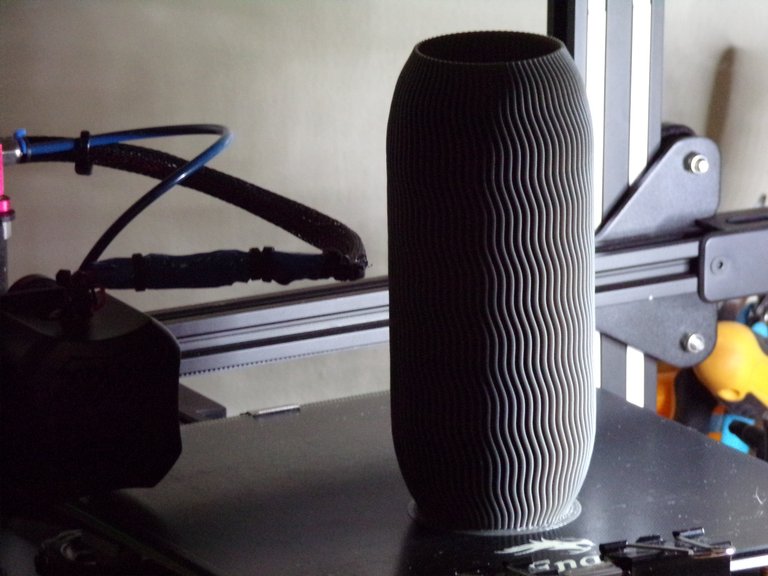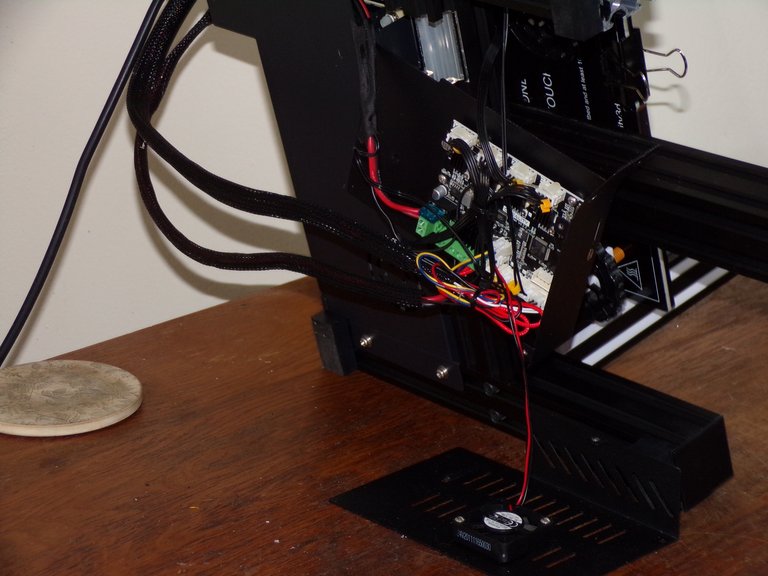Troubleshooting Complete?
Hello Everyone,
As a few of you know who have been following along, I've been troubleshooting a layer shifting problem with the Creality Ender 3 V2. (main site link.)
I felt like I had tackled everything mechanically that could possibly be causing this, as well as forced my Raspberry Pi 3B + into an overclock state to mitigate the potential negative effects of throttling, which Klipper firmware had been alerting me to. After solving this and seeing the same results replicate, I started thinking more in terms of the machines chipset and components on an electrical level.
So I started researching...
In no time I found YouTube videos with people having the same problem on the Ender 3 V2, and between the videos and reading video comments, two things became clear to me.
- The ender 3 V2 comes stock with two different mainboards.
- It was the older mainboard that everyone was having problems with.
Since I took the machine apart recently and visually remember the chip model, I knew I had the older one, which aligned perfectly to the fact that I am having this exact same issue as the folks with the old mainboards.
I thought to myself:
"The last time I ran spiral vase mode, I didn't see the problem occur. This makes sense because there are less voltage spikes to the extruder stepper motor, due to being no retractions. So why don't I run one more test to see what the results are with no retracts."

Pill Vase
by Antonin_Nosek, licensed under theCreative Commons - Attribution - Non-Commercial license.
Not only are there no layer shifts, I was pleasantly surprised by how nice this vase came out. I think the extensive maintenance has paid off in that the machine itself is very capable of producing prints of the finest quality.
This is printed at 0.6 mm layer height, with an 0.8 mm nozzle. This is my preferred vase printing resolution, due to the very noticeable strength difference with a single layer vase, as compared to printing at resolutions like 0.4 mm's and higher, prints will be flimsy and prone to cracking.
The above print is super cool, and I intend to print a few more of these and run a cannabis grow test with them. Cannabis likes a long tap root, so that is why I was thinking long tube style vase.
After this print I have determined that it must be the mainboard causing the layer shifts.
To show just how bad these layer shift are, here is a photo from a previous post:

Troubleshooting a layering problem
The cause of this according to everyone who's figured it out, is heat.
The mainboard fan runs on the same circuit as the parts fan, which does not run the entire time the print runs. This is not a good electrical design, because at certain points the board will get extremely hot due to no cooling while under load.
Ventilation and placement is not good either, as it becomes a tucked in hot box under the already heated bed plate. I verified that the housing is so hot during prints, that it can barely be touched with the naked hand!
So this overheating apparently causes a rogue voltage signal to the stepper motors and the layer shifts occur. Wild stuff, and other people said that even after fixing the heating problems, the layer shifting problem came back later on and was worse, attesting that the board is just not good and needs replacing.
The board that came on mine is the 4.2.2


The board that I will likely need to upgrade to is 4.2.7, which comes with an average price tag of $30.00 USD. I'm not in a hurry to buy one and will see if a good cooling solution will take care of the problem.
My Ender 3 V2 is in this state while I type this, and I have some mixed feelings about this issue with the printer.
One one hand, it's been a great learning experience for me, and I would not have such a comprehensive feel and understanding of this printer had it worked great out of the box.
On the other hand, the ability to learn designing has taken a major back seat during all of this, because I am just not great at taking on multiple learning tasks all at once, and much of my mental focus has been a deep state of concentration to figure this issue out, and since it is a known issue with the 4.2.2 board, which causes catastrophic results, I'm kind of not so happy that I bought what is somewhat of a faulty unit, and Creality has been hounded by the 3D printing community for this but still continues to sell products with this faulty functioning mainboard.
To the consumer it looks like a bunch of these boards were manufactured and they are just sliding them up in the new machines still because it's more profitable to not dispose of them all.
If anyone wants to buy an Ender 3 V2, I'll say that it is a pretty nice machine that can produce some really good quality prints, but I would really make sure that the one you are purchasing comes with the 4.2.7, and if this cannot be verified, I would say buyer beware.
I still don't know with 100% certainty that this is the cause of the issue, but I feel confident enough that I would put a relatively large wager on it :D
Tonight I am going to wire up that fan to run whenever the machine is on. Hopefully I don't screw that up.
The main hot end fan runs whenever the machine is on, and is a 12 volt fan, as is the mainboard fan, but I will verify this with a multimeter first, and if the voltages are the same as expected, I will wire the mainboard fan to the same circuit. I'm really not sure if anything could go wrong with this but I will be testing before soldering and hopefully will not electrocute myself.
Updates to come..
Thanks for stopping by,
Have a great day! ~~@print3dpro
I recently got an Ender 3 (not the v2) and have experienced some similar issues that I'm troubleshooting. I'm glad it's not just me! (Misery does love company, you know). I've mostly been modifying print settings and temperature. I'm finding that I am having a lot of issues with detail; if I print simple shapes and blocks it's a beast, but trying to print a DnD mini figure, for instance, it has problems.
Hopefully you won't electrocute yourself! Good luck!
Hello and thank you for the great feedback!
I have not started splicing wires yet, but my plan (probably today) is to wire up that fan to run whenever the machine is on, and I will not be re-housing the motherboard due to the fact that its placement is a nice little heat box under a heated bed plate :D
I'm going to search thingiverse to see if anyone has created a "rack" housing for the board, and if not I will start working on my own design. (which should be fun because my design capabilities are pretty beginner)
It might not be a bad idea to see what kind of board your Ender has, assuming maybe you have the Ender Pro? I think they utilize the same motherboards.
We might be experiencing the same issue.
I think that's my families favorite saying, (at least on the Irish side :D)
Thanks again, hopefully I'm able to fix this and offer some insight for others who are having similar problems.
Will update soon!
Good luck! I'm a little behind checking up here, so not sure if you've posted an update yet. Hopefully you didn't set anything on fire!